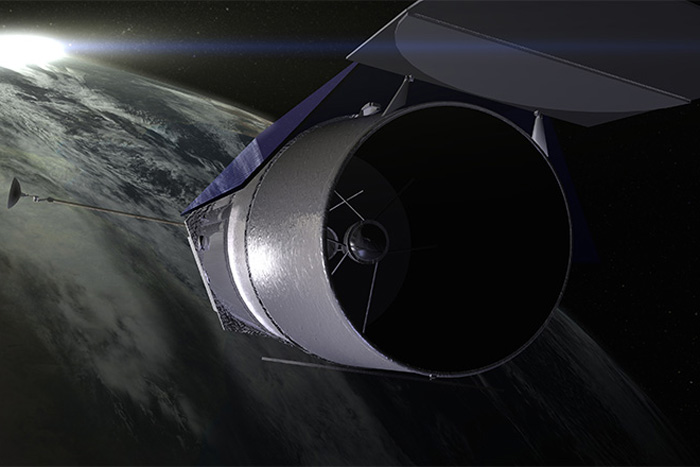WFIRST: Work On NASA's 'Spy Telescope' Begins

Next month, NASA will begin work on its next major space observatory after the James Webb Space Telescope, which is finishing construction for launch in 2018. The new mission is called WFIRST (Wide Field Infrared Survey Telescope) and will investigate dark energy, exoplanets and galaxy formation. It is expected to fly in 2024.
Top 10 Space Stories of 2015: Readers’ Choice
"Formulation is when we formalize the mission requirements," said David Spergel, co-chair of the WFIRST science definition team, in an e-mail to Discovery News.
"An example of something that we will decide during formulation is the filters that we will use. We need to weigh the relative merits of being sensitive to bluer photons versus having sharper wavelength coverage … Improved blue sensitivity will help us better characterize the properties of stars in nearby galaxies, but possibly at the cost of less accurate determination of distance to galaxies through photometry."
NEWS: Psst! What Would You Do With a Spy Telescope?
WFIRST's advantage is its immense field of view. It uses an old, unflown spy telescope that has the same mirror size as Hubble — 2.4 meters — but a field of view 200 times wider. This will allow it to cover more sky at greater depth in the infrared than any observatory before, Spergel said.
Additionally, a coronograph (an instrument that blocks light from bright objects) being constructed for the mission will be "orders of magnitude more sensitive" than other space coronographs, he said, allowing for exoplanet properties to be better understood.
Get the Space.com Newsletter
Breaking space news, the latest updates on rocket launches, skywatching events and more!
Hubble at 25: Space Telescope's Top Science Discoveries
The mission will use a National Reconnaissance Office telescope, which was gifted to NASA a few years ago, while resurfacing the mirror and adding instruments and electronics. NRO actually gave two telescopes to NASA, but for the moment the second one will be used as a backup for WFIRST.
WFIRST's formulation phase comes amid a budget boost from Congress, which approved a fiscal 2016 budget for the project of $90 million, more than six times NASA's $14 million request. WFIRST is also the top mission in the National Research Council's decadal survey of 2010, where astrophysicists were asked to identify their research priorities.
Originally published on Discovery News.
Join our Space Forums to keep talking space on the latest missions, night sky and more! And if you have a news tip, correction or comment, let us know at: community@space.com.

Elizabeth Howell (she/her), Ph.D., was a staff writer in the spaceflight channel between 2022 and 2024 specializing in Canadian space news. She was contributing writer for Space.com for 10 years from 2012 to 2024. Elizabeth's reporting includes multiple exclusives with the White House, leading world coverage about a lost-and-found space tomato on the International Space Station, witnessing five human spaceflight launches on two continents, flying parabolic, working inside a spacesuit, and participating in a simulated Mars mission. Her latest book, "Why Am I Taller?" (ECW Press, 2022) is co-written with astronaut Dave Williams.











